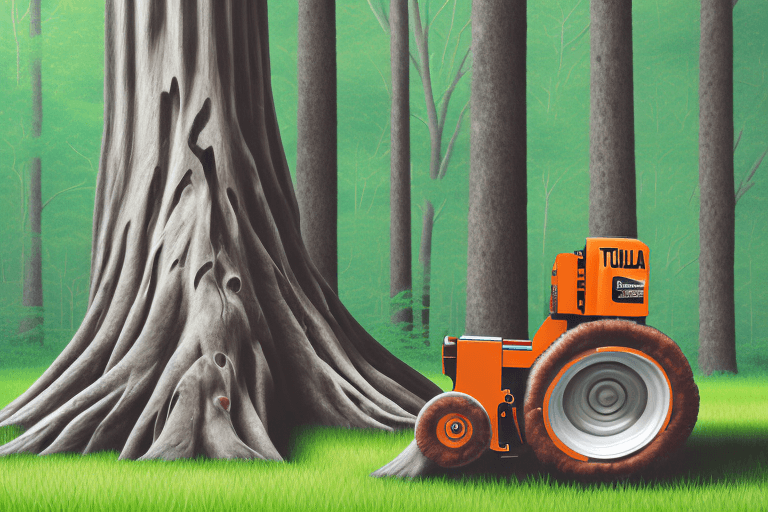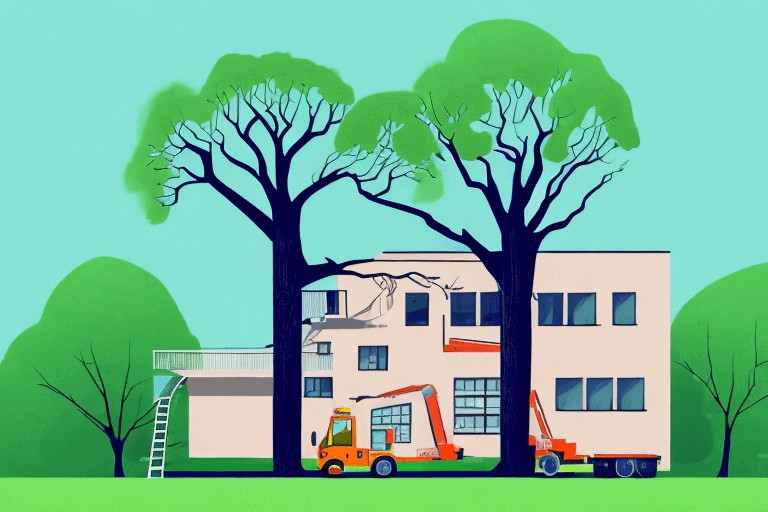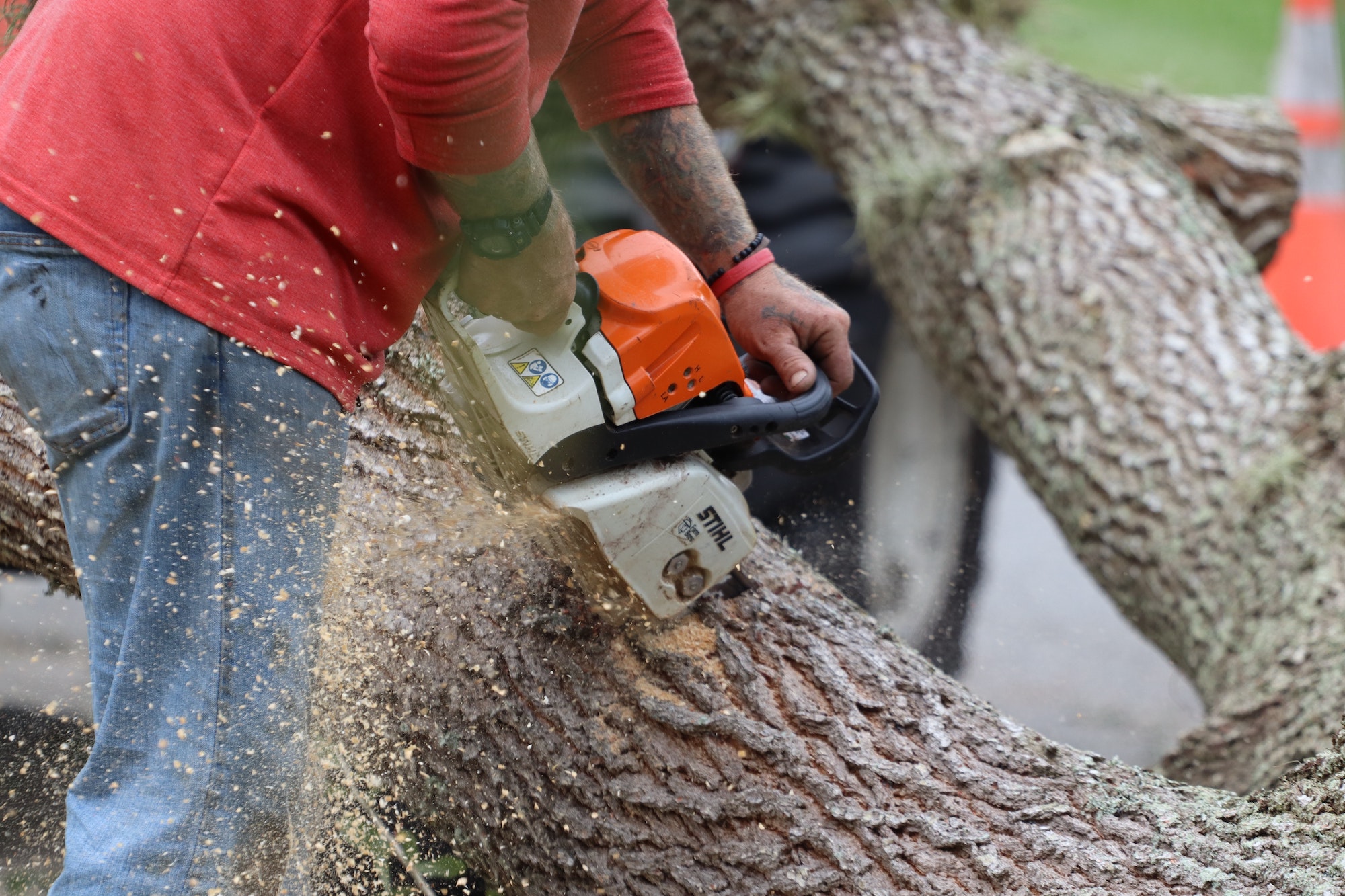When it comes to the safety and well-being of your property and loved ones, it’s important to be aware of the signs that indicate when it’s time for tree removal. Trees are not only beautiful and beneficial to the environment, but they can also pose risks if they become unstable, diseased, or dead. In this article, we will explore the importance of tree removal, how to identify the top signs for removal, the process involved in safe tree removal, preventive measures and regular tree maintenance, and the environmental impact of tree removal.
Understanding the Importance of Tree Removal
The Role of Trees in Your Property’s Ecosystem
Before delving into the signs that indicate the need of Sydney tree lopping, it’s crucial to understand the role that trees play in your property’s ecosystem. Trees provide shade, improve air quality, and increase property value. They are essential components of a healthy and balanced environment.
Not only do trees offer aesthetic appeal, but they also contribute to the overall well-being of the ecosystem. Through the process of photosynthesis, trees absorb carbon dioxide and release oxygen, helping to purify the air we breathe. Their extensive root systems help prevent soil erosion and provide stability to the surrounding landscape. Additionally, trees act as natural sound barriers, reducing noise pollution and creating a peaceful environment.
Safety Concerns Posed by Unstable Trees
However, when a tree becomes unstable, it can pose significant safety concerns. Unstable trees are more likely to fall or lose branches, putting your property, structures, and loved ones at risk. It’s important to be able to recognize whether a tree is exhibiting signs of instability.
One of the key indicators of an unstable tree is noticeable leaning. If a tree is leaning more than usual or has suddenly developed a significant tilt, it may be a sign of underlying issues such as root damage or structural weakness. Cracks or splits in the trunk, especially those that are deep or extend to the branches, can also indicate a compromised tree. Another warning sign is the presence of dead or decaying branches, which can easily break off and cause damage during storms or high winds.

Furthermore, the presence of fungus or mushrooms growing on or around the tree can be a clear indication of internal decay. This decay weakens the tree’s structure and makes it more susceptible to falling. Additionally, if you notice an excessive amount of dead leaves or branches on the tree, it may be a sign of declining health and instability.
It is important to address these signs of tree instability promptly to prevent potential accidents or property damage. Consulting with a professional arborist can help you assess the situation and determine the best course of action. In some cases, tree removal may be necessary to ensure the safety of your property and those around you.
Identifying the Top Signs for Tree Removal
Physical Indicators of a Dying or Dead Tree
One of the top signs that a tree may need to be removed is when it is showing physical indicators of being diseased, dying, or dead. These indicators can include a significant loss of leaves, discolored foliage, or branches that are brittle and prone to breaking. Additionally, if you notice mushrooms or fungi growing at the tree’s base, it could be a sign of decay.
When a tree is diseased, it struggles to maintain its health and vitality. This can result in a noticeable loss of leaves, even during the tree’s peak growing season. The leaves may turn yellow or brown, and some may even prematurely fall off. This weakened state makes the tree more susceptible to pests and further damage.
Brittle branches are another clear sign that a tree is in distress. As the tree’s health declines, its branches become weak and prone to breaking. This can pose a significant risk, especially during storms or high winds. Falling branches can cause damage to property or even pose a threat to people nearby.
Signs of Disease or Pest Infestation in Trees
Another reason for tree removal is when a tree is showing signs of disease or pest infestation. Common signs of disease include the presence of cankers, lesions, or visible signs of decay. Pest infestations can be indicated by the presence of boreholes, nests, or the appearance of insects on the tree’s trunk or branches.
Cankers are areas of dead or dying bark on a tree’s trunk or branches. They are often caused by fungal or bacterial infections and can weaken the tree’s structure. Lesions, on the other hand, are open wounds on the tree’s bark, which can be caused by various factors such as physical damage or disease. Both cankers and lesions are signs that the tree’s health is compromised and may require removal.
Pest infestations can wreak havoc on a tree’s well-being. Insects such as beetles, borers, or caterpillars can cause extensive damage to the tree’s foliage, bark, or even its internal structure. Boreholes, where insects have burrowed into the wood, are a clear indication of an infestation. Nests or webs on the tree can also be a sign of pests, as certain insects create protective structures for their colonies.
It is important to address signs of disease or pest infestation promptly to prevent further spread and potential damage to other nearby trees. In some cases, removal may be the best course of action to protect the overall health of the surrounding ecosystem.

The Process of Tree Removal
When to Call a Professional Arborist
If you notice any of the above signs, such as dead branches, leaning trees, or visible decay, it’s essential to call a professional arborist for an evaluation. Trees are an important part of our ecosystem, providing shade, beauty, and habitat for wildlife. However, when a tree becomes a potential hazard, it’s crucial to take action. Arborists are trained to assess tree health and determine whether removal is necessary. They have the knowledge and equipment to safely remove trees and minimize potential damage.
When you call a professional arborist, they will schedule a visit to your property to assess the tree in question. During the evaluation, they will carefully examine the tree’s structure, health, and surrounding environment. They will look for signs of disease, pest infestation, or structural weakness that could pose a risk to people or property. Based on their findings, they will recommend the best course of action, which may include tree removal.
The Steps Involved in Safe Tree Removal
Once it has been determined that tree removal is necessary, the process typically involves several steps to ensure safety and efficiency. Each step is carefully executed by the arborist and their team to minimize any potential risks.
Step 1: Assessment and Planning
The first step in the tree removal process is to assess the tree and plan the best approach for removal. The arborist will consider factors such as the tree’s size, location, and surrounding structures. They will determine the safest way to bring down the tree, taking into account any potential obstacles or hazards.
Step 2: Clearing the Area
Before the actual removal begins, the area around the tree needs to be cleared to ensure the safety of the arborist and anyone nearby. This involves removing any obstacles, such as furniture, vehicles, or other structures that may be in the way. Clearing the area also allows for a safe landing zone for the tree’s branches and trunk during the removal process.
Step 3: Tree Removal
With the area cleared, the arborist will carefully cut down the tree. They will use specialized equipment, such as chainsaws and ropes, to control the direction of the tree’s fall. The arborist will make strategic cuts to ensure the tree falls safely and does not cause damage to surrounding structures or landscapes.
Step 4: Stump Removal or Grinding
After the tree has been cut down, the arborist will assess whether the stump needs to be removed or ground down. Stump removal involves digging out the entire stump, including its roots, which can be a labor-intensive process. Grinding the stump, on the other hand, involves using a stump grinder to break down the stump into small wood chips. This method is less invasive and leaves the area ready for future landscaping or construction.
Step 5: Debris Clearance
Once the tree and stump have been removed, the arborist and their team will clear away any debris. This includes branches, leaves, and other tree remnants. They will ensure that the area is clean and free from any potential tripping hazards.
Tree removal is a complex process that requires expertise and precision. Hiring a professional arborist ensures that the job is done safely and efficiently, minimizing any risks or damages. If you have a tree on your property that needs to be removed, don’t hesitate to call a professional arborist for an evaluation and guidance on the best course of action.

Preventive Measures and Regular Tree Maintenance
Routine Tree Inspections and Care
Preventing the need for tree removal starts with routine tree inspections and care. Regularly inspect your trees for signs of disease, pest infestation, or instability. This can be done by observing the leaves, branches, and trunk for any abnormalities or changes in appearance. Look out for discoloration, wilting, or unusual growth patterns, as these can be indications of underlying issues.
In addition to visual inspections, it is important to physically examine the tree’s bark and roots. The bark should be intact and free from cracks or wounds, as these can provide entry points for pests and diseases. The roots should be firm and well-anchored in the soil, as weak or damaged roots can compromise the stability of the tree.
Prune branches as needed to maintain proper structure and prevent overgrowth. Remove any dead, diseased, or damaged branches, as they can pose a safety risk and contribute to the spread of diseases. Proper pruning techniques, such as making clean cuts just outside the branch collar, can promote healthy growth and minimize the risk of infection.
It’s also crucial to provide proper nutrition and water to your trees to ensure their health and vitality. Consider the specific needs of each tree species, as different trees have different requirements. Adequate watering, especially during dry periods, can help prevent stress and improve the tree’s ability to fight off pests and diseases.
Planting and Pruning Tips for Healthy Trees
When planting new trees, it’s important to choose the right species for your location, considering factors such as soil type, sunlight exposure, and space availability. Different tree species have different tolerance levels for various environmental conditions, so selecting the appropriate species can greatly enhance the tree’s chances of thriving.
Before planting, prepare the soil by loosening it and removing any weeds or grass. This will create a favorable environment for the tree’s roots to establish and grow. When placing the tree in the planting hole, make sure the root flare, the area where the trunk starts to widen at the base, is level with or slightly above the soil surface. Improper planting depth can lead to root suffocation and hinder the tree’s growth.
Proper pruning techniques can also help maintain healthy tree growth. Prune branches that are crossing or rubbing against each other to minimize the risk of disease and branch failure. It is important to use sharp, clean tools to make precise cuts and avoid tearing the bark. Applying a pruning sealant to large wounds can help protect the tree from pests and diseases.
In conclusion, preventive measures and regular tree maintenance are essential for the long-term health and well-being of trees. By conducting routine inspections, providing proper care, and following planting and pruning best practices, you can minimize the risk of tree removal and ensure that your trees thrive for years to come.
The Environmental Impact of Tree Removal
Balancing Safety and Sustainability
While tree removal is sometimes necessary for safety purposes, it’s crucial to balance this need with sustainability. Trees provide numerous environmental benefits, including carbon sequestration and habitat for wildlife. Whenever possible, consider replanting or promoting restoration efforts in the area after tree removal.
Replanting and Restoration After Tree Removal
If a tree must be removed, consider replanting another tree in its place. This ensures that the ecosystem continues to benefit from the presence of trees. Replanting should be done with careful consideration of species selection and proper planting techniques to maximize the chances of success.
In conclusion, being aware of the signs that indicate when it’s time for tree removal is essential for protecting your property and loved ones. Understanding the importance of tree removal, identifying the top signs for removal, knowing the process involved, and implementing preventive measures and regular maintenance can help ensure the safety and sustainability of your property’s ecosystem. Remember, always consult with a professional arborist for proper evaluation and guidance when dealing with tree removal.

